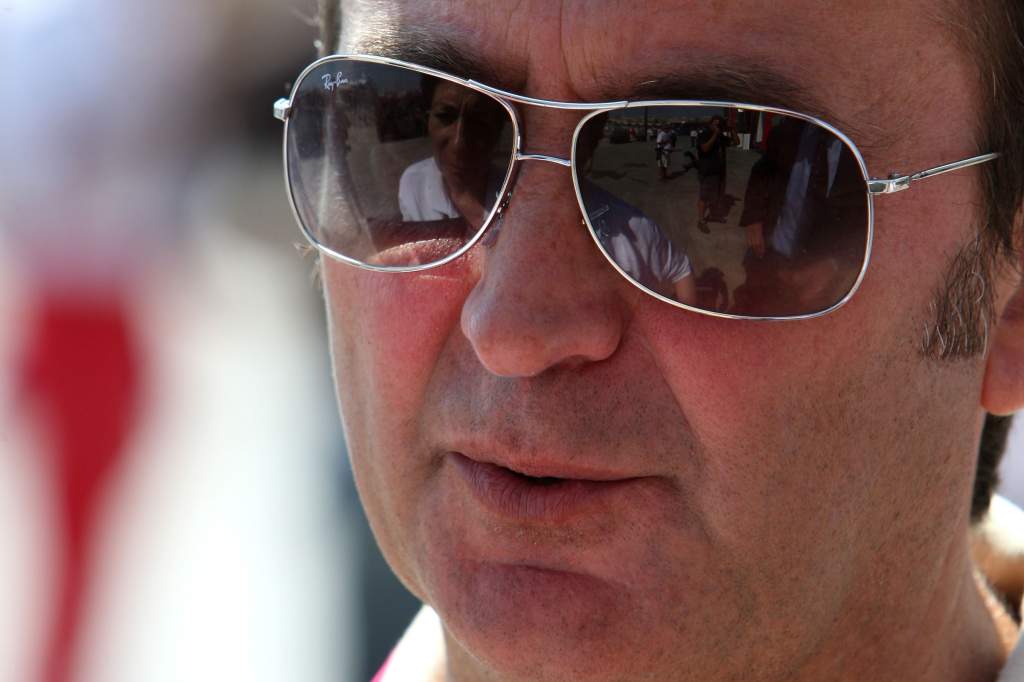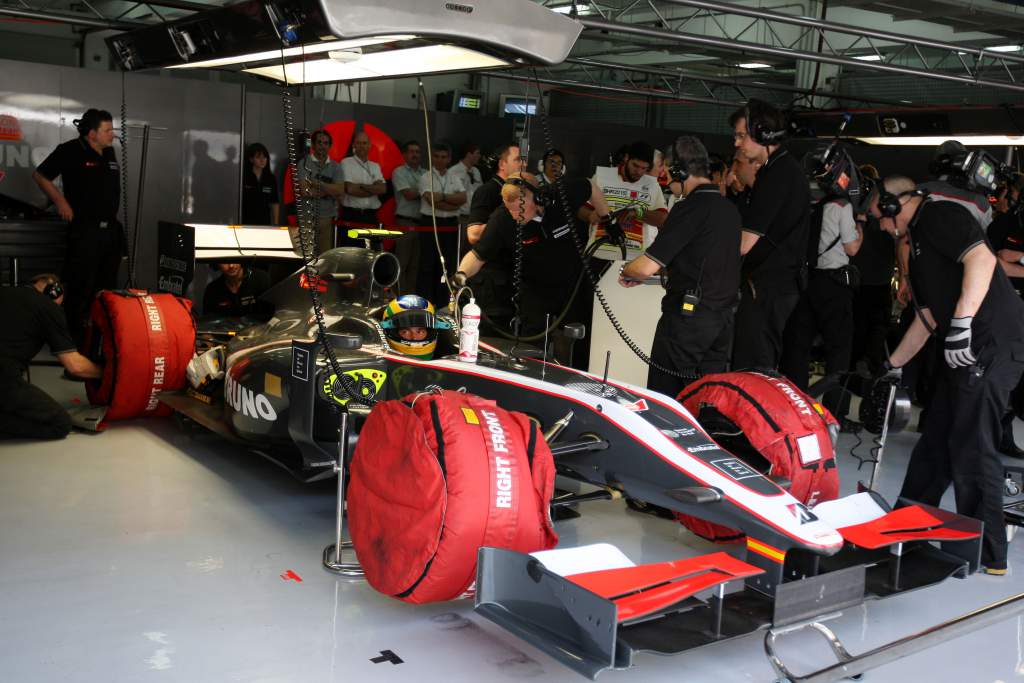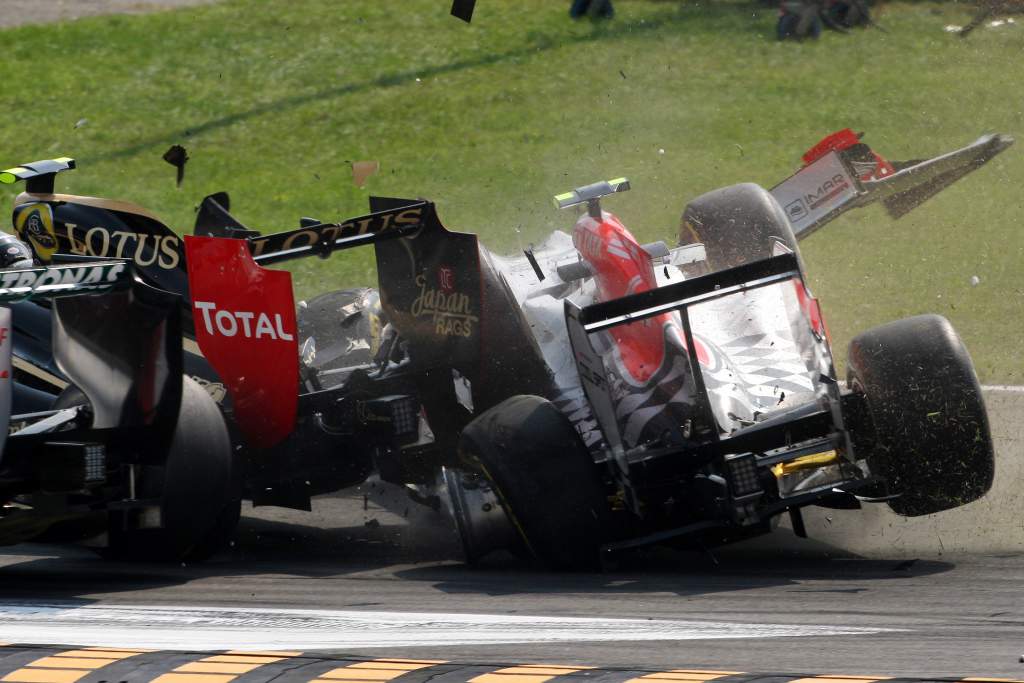Up Next

Adrian Campos’s Formula 1 career comprised 17 starts across a season-and-a-half with Minardi in 1987-1988, but he never gave up on attempts to return as a team boss.
And what he called his “dream” appeared to have come true for the 2010 season.
Campos’s first attempt to establish an F1 team was with the Bravo project that aimed to join F1 in 1993. Formed alongside Jean-Pierre Mosnier, who had previously run the works Lola F3000 squad, the project ran out of money before making the grid. Campos – by then a highly successful junior single-seater team boss – had also held talks about acquiring the assets of the Super Aguri team after its closure in 2008.
But the opportunity of a lifetime appeared to have presented itself with F1’s push to attract new independent teams for 2010.
This was a response to the global financial crisis, with FIA president Max Mosley creating regulations that allowed teams to run under an optional £30million budget cap in exchange for rules breaks. This rose to £40m in April 2009, but that didn’t put Campos off.
The timing appeared to be perfect. Not only were there places in F1 available under favourable financial conditions, but F1 was enjoying a boom time in terms of Spanish interest thanks to the success of Fernando Alonso. Campos had played a key role in that, managing Alonso before Flavio Briatore took over and running him to title success in the Euro Open by Nissan Series in 1999.
Campos’s application for a place on the 2010 F1 grid was accepted along with US F1 and Virgin Racing in June 2009. Later that year, Lotus Racing (later Caterham) was also awarded a grid slot.
Named Campos Meta 1, thanks to a partnership with Spanish company Meta Image, the team looked promising.

With Campos (pictured above) as team principal and the massively experienced Daniel Audetto as managing director, it had deals with Dallara to develop the chassis and Cosworth engines. Campos also had a good record as a team boss in categories such as GP2, Nissan World Series and Formula 3, as well as financial backing from Jose Ramon Carabante.
Things started to get shaky when the FIA, under pressure from the established F1 teams, dropped the budget cap entirely. All of the new teams were badly hit by what was the fallout of the battle between FIA and the Formula 1 Teams’ Association, with the very real threat of a breakaway series being established before an agreement was struck.
The Campos project continued but lost momentum. Funds to pay Dallara’s development of the car were drying up and Meta Image dropped out.
Growing disagreement between Carabante and Campos about the direction of the team, in particular the role of Dallara and the cost of the deal with the Italian chassis manufacturer, ultimately led to Campos’s departure as he sold his stake to Carabante.
Behind the scenes, Bernie Ecclestone played a part in this process and the reigniting of the team as Hispania Racing – named after Carabante’s Hispania Group – with Colin Kolles taking over as team principal.

What was officially entered as HRT used a combination of what Campos had set up and Kolles’s own facilities to make the grid in 2010 running Bruno Senna and, for the first half of the season, Karun Chandhok.
The team used the Dallara-designed F110 chassis but this was the initial specification of car, with the planned upgrades that promised significant performance gains therefore never built as HRT decided to go it alone.

HRT lasted for three seasons before dropping out of F1, by which time it was owned by Thesan Capital. In that time, it never scored a point, despite employing some accomplished personnel, thanks to always running on a shoestring budget. Its best finish was a 13th place.
Campos never gave up hope of making it to F1, with an announcement in 2019 that his team was working on a project that could join the grid in 2021.
A small team was assembled to put together a preliminary study for the purposes of building a budget, but the project never advanced beyond this stage.





